Modern kitchen design with a bar
A bar counter is an item that is appropriate in any interior style. It will suit both modern techno or hi-tech, and a traditional loft, and to "folk" options for interior decoration, and to "timeless classics" - the difference will only be in the form and finishing materials. By design features, bar counters can be divided into the following groups:
- Wall mounted. They are located along the walls, and successfully replace traditional breakfast tables in small kitchens, saving space and facilitating the visual perception of the room. Racks of this type are usually not associated with kitchen furniture and work surfaces. Their design may differ from the rest of the furniture.
- Combined. This is the most versatile option that allows you to extend the work surface, change the shape of the kitchen (for example, turn it from linear to L-shaped). The top of the rack is a continuation of the worktop and moves away from it either linearly or at an angle. Under such a rack, you can place kitchen equipment or additional shelves for storing dishes or supplies. The interior of a kitchen with a bar of this type can be easily divided into functional zones if the kitchen is in the same room as the dining room.
- Combined. In this version, the countertop is adjacent to the work surface, but has a different height. Usually, the work surface is directed towards the kitchen, and the higher bar is towards the dining area.
- Insular... The island stand is usually combined with household appliances - stove, sink. As a rule, it has a fairly significant size and requires a large kitchen area in order to be easily walked around from all sides. The design of such kitchens is original and practical.
Bar counters can be made of various materials - from the simplest to the exclusive - expensive types of wood, natural stone, it all depends on the overall interior design. They have one thing in common - increased height.
If dining tables have an average height of 70 to 80 cm, then the height of the bar counter in the kitchen can vary from 90 cm (in the case of a combined design) to 115 cm. Therefore, their use requires special "bar" stools also of increased height, and better, if they have backrests for seating comfort.
Bar kitchen options
It is impossible to describe all the variety of possible options, since in each specific case the designer decides what kind of this furniture structure is most suitable for the room set aside for the kitchen.
But, nevertheless, there are the most common options that are in a certain sense universal and allow you to solve several problems at once: equip a functional kitchen room, carry out zoning, create an expressive design.In any interior, the bar counter will not be lost, and will be not only a convenient, but also a functional piece of furniture.
Kitchen with a bar counter by the window
In small kitchens, the window sill, as a rule, does not look very attractive, turning into a place where objects that have not found a place accumulate. What kind of design can we talk about in this case? The problem is easily solved by replacing the standard window sill with a bar counter.
This eliminates the need for a separate snack table, which greatly saves space. In addition, it is pleasant to sit near the window - you can, for example, drink coffee and admire the view beyond the window. In addition, this is the brightest place in the apartment, and the bar counter can become the place where it is convenient to practice various hobbies.
It is possible to equip a "breakfast table" by the window even if the window is French and does not have a window sill. The only drawback - in this case, it is not recommended to arrange storage shelves or put kitchen appliances under the countertop, as this reduces the illumination.
The interior, designed in this way, will continue to be light, and at the same time more comfortable. In the event that the lower part of the window is located higher than usual, additional storage containers can be made under the tabletop.
U-shaped kitchen with a bar counter
Quite often, a bar counter is attached to the L-shaped working surface of the kitchen in such a way that in the plan the kitchen forms the letter P. This is a rather convenient option, of course, if the size of the room allows.
The design with this arrangement of work surfaces allows you to organize an ergonomic workplace, while under the counter you can place equipment or containers for storing food. Additionally, it can visually limit the kitchen if other functional areas are located in the same room with it.
Kitchen-dining room with bar counter
In open-plan interiors, designers prefer to combine the functions of a kitchen and a dining room in one volume. In this case, a rack with a table top can act as a "divider", separating the cooking area from the food receiving area. Various options are possible here. For example, a combined counter will allow you to equip an additional workplace in the kitchen, while the "bar" part directed towards the living room will not only provide an opportunity to have a snack, but also serve as a decorative element in the design of the dining area.
Corner kitchen design
Usually corner kitchens have the shape of the letter G. By adding a bar counter to it, you can get a more cozy and comfortable room for the hostess. Surrounding with work planes on three sides will help organize the cooking process in such a way that it takes a minimum of effort.
See more photo of corner kitchens with a bar.
Photo of kitchen design with a bar
The photographs below show various uses for bar counters.
Photo 1. The bar counter is combined with the main working surface in the shape of the letter P.
Photo 2. The U-shaped kitchen is separated from the rest of the room by a bar counter of the same height as the main work surface
Photo 3. A small bar counter gives originality to the design of a small kitchen, allows you to organize a cozy place for relaxation and friendly conversation, and does not take up much space.
Designer: Pedorenko Ksenia.Photographer: Ignatenko Svetlana.
Photo 4. The bar counter can have a complex shape - it is convenient and original, the interior looks unusual and stylish.
Photo 5. An example of a combined bar counter in the interior of a small kitchen.
Photo 6. The lightweight design of the rack does not clutter up the room, but visually distinguishes the working area of the kitchen.
Photo 7. The glass tabletop is almost invisible in the interior and does not make the room feel heavy.
Photo 8. The bar counter closes the space reserved for the kitchen area, thereby limiting it visually.The contrasting color of the furniture emphasizes this distinction and lends completeness and graphicity to the design of the room.
Photo 9. The combined stand in the color of the furniture is very functional and does not violate the integrity of the interior.

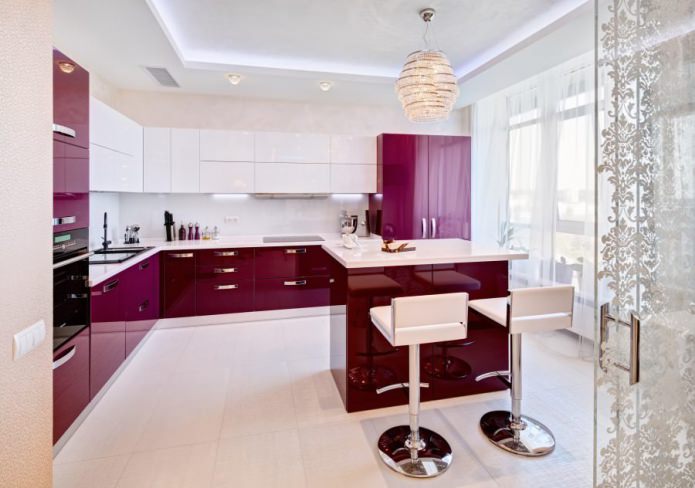
 10 practical tips for arranging a small kitchen in the country
10 practical tips for arranging a small kitchen in the country
 12 simple ideas for a small garden that will make it visually spacious
12 simple ideas for a small garden that will make it visually spacious
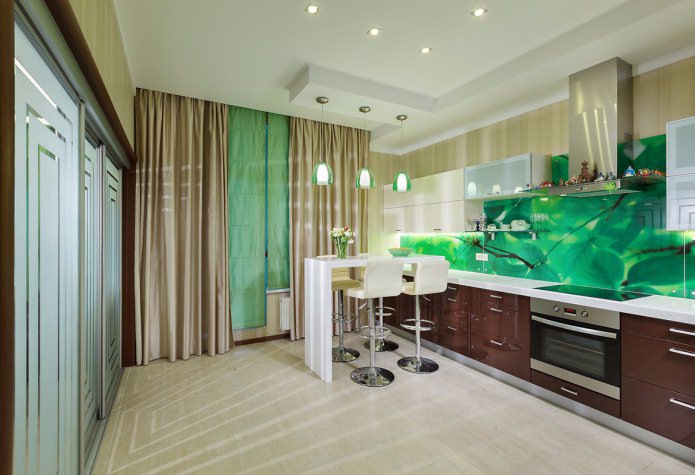

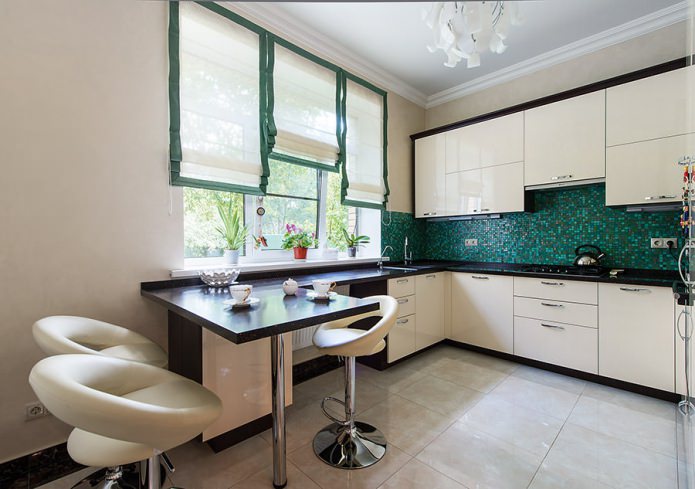
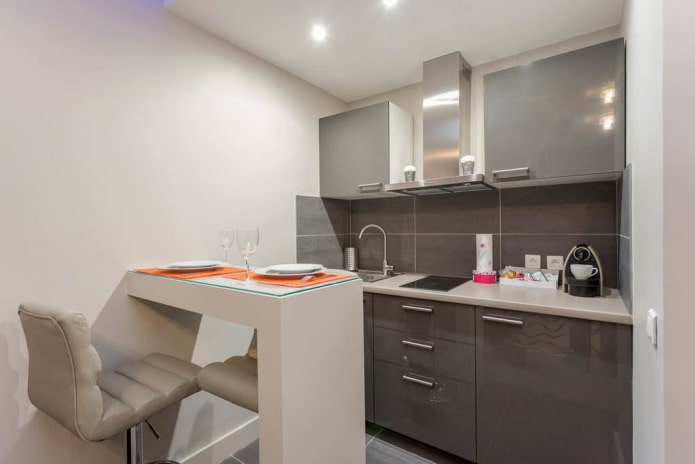
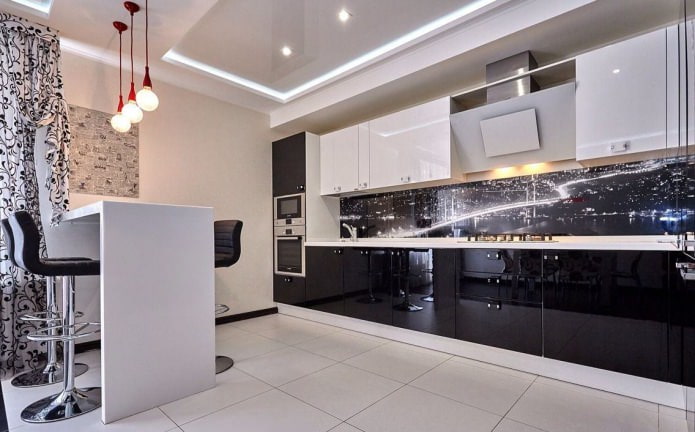
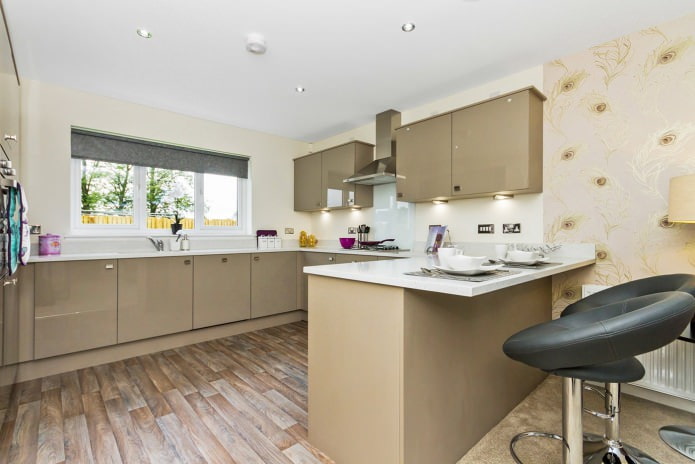
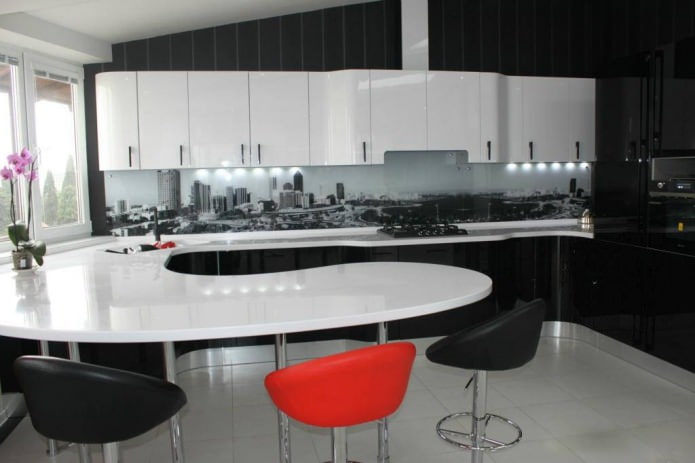
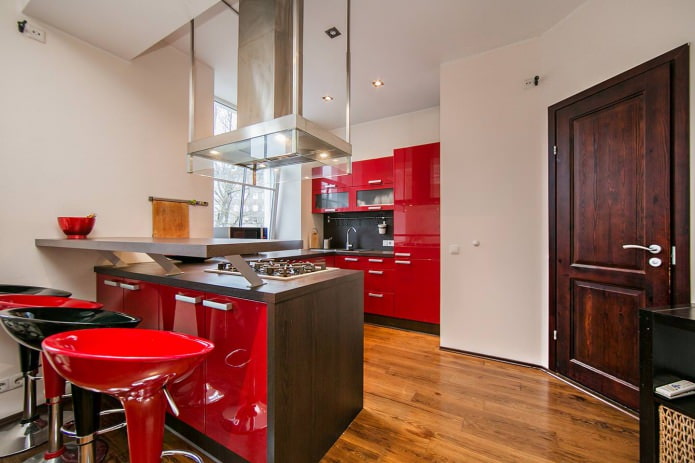

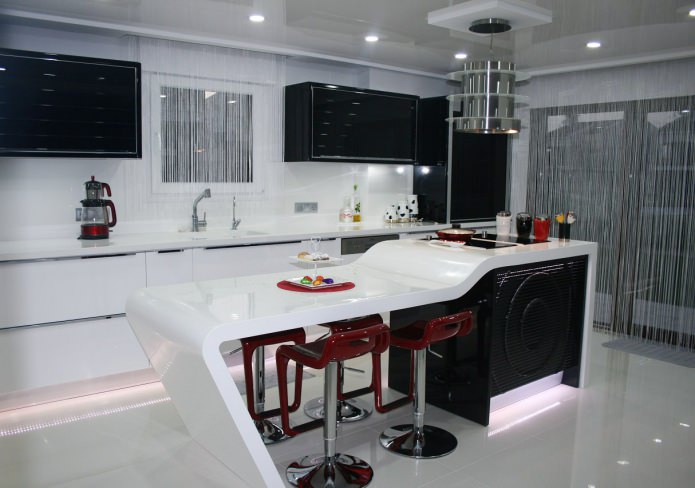

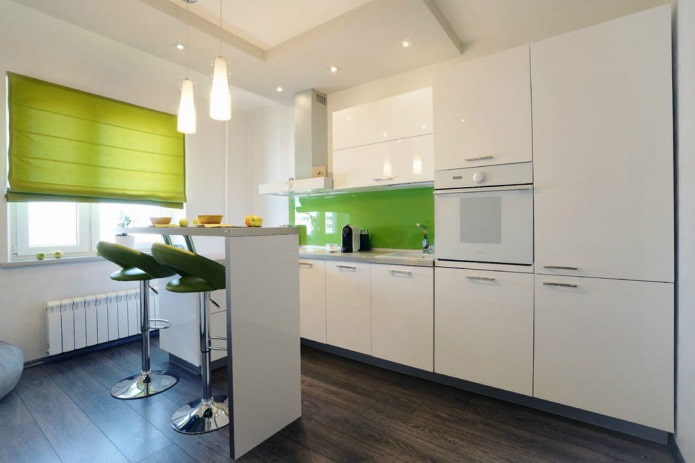
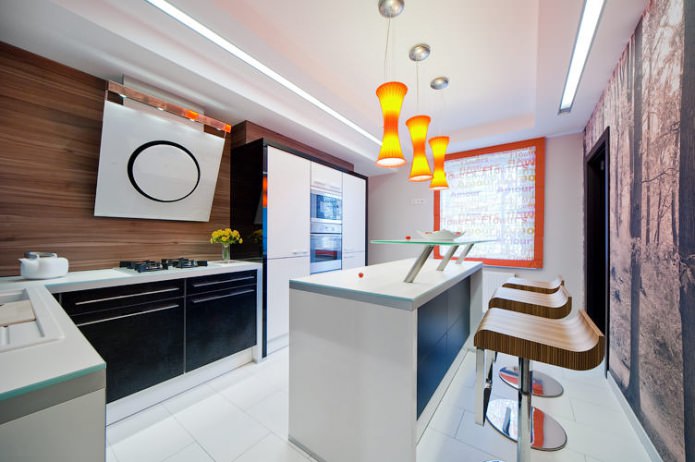
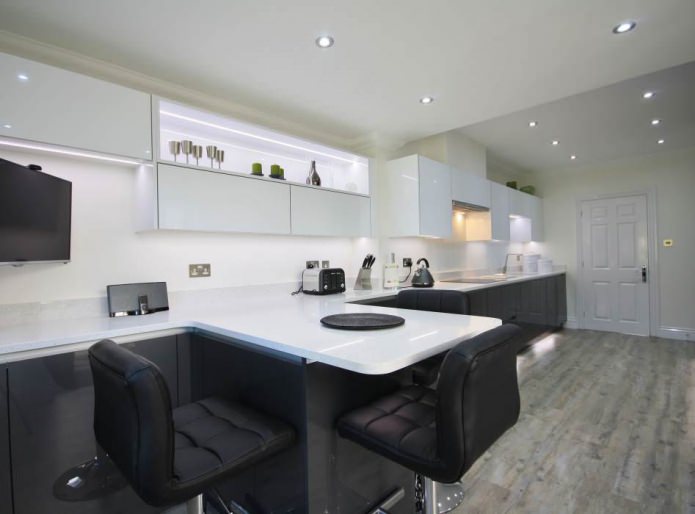
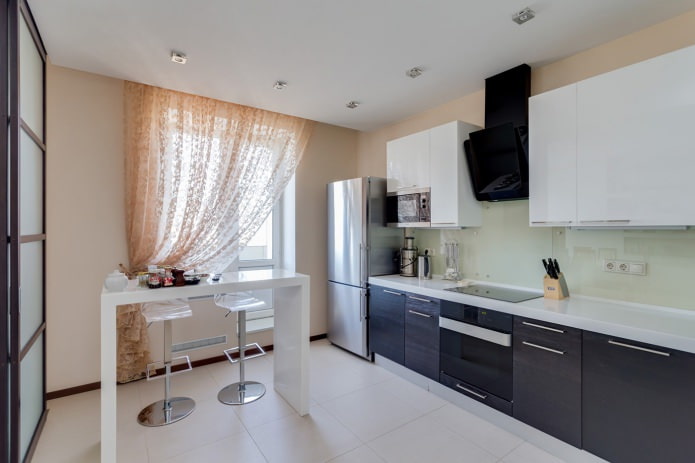
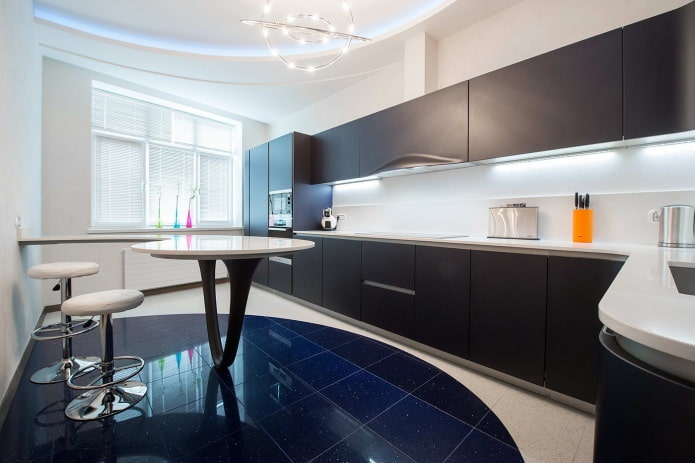
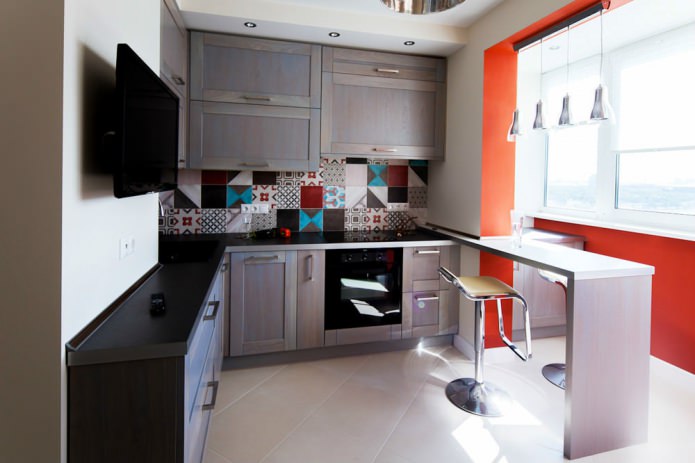

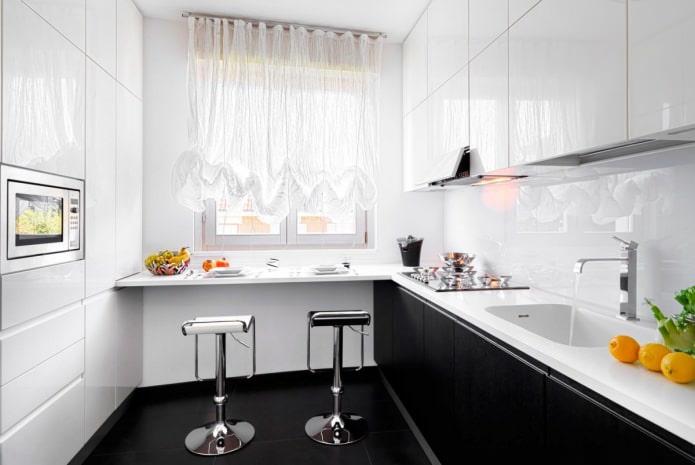
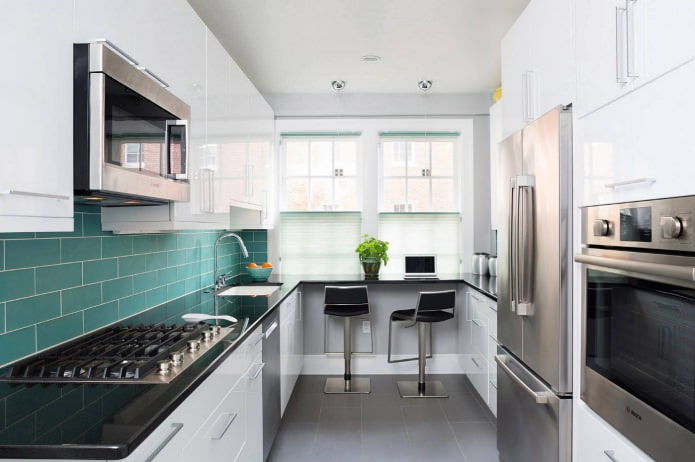
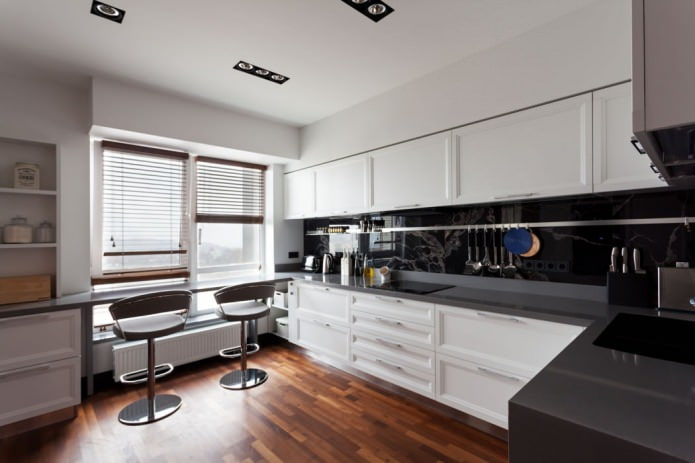
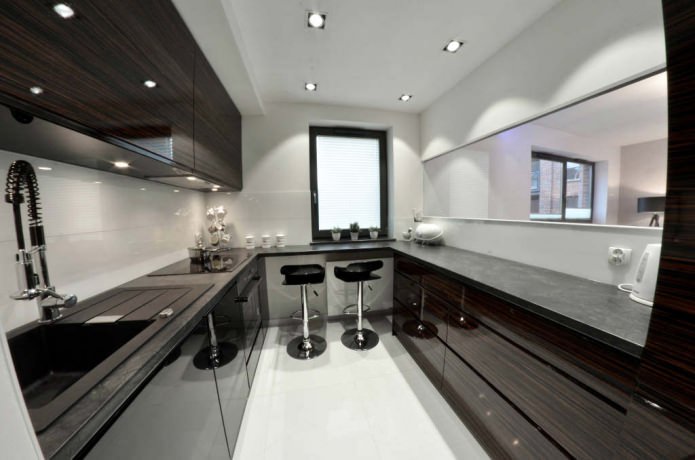
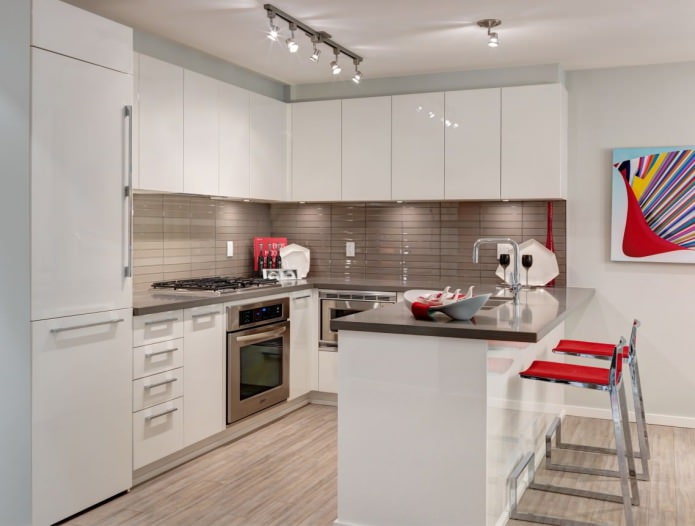

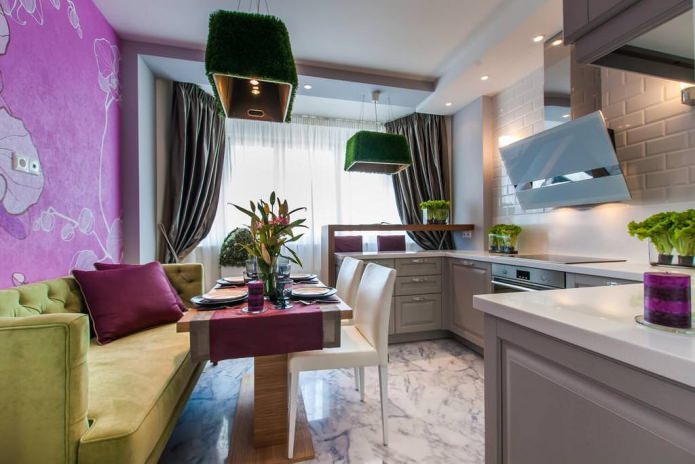
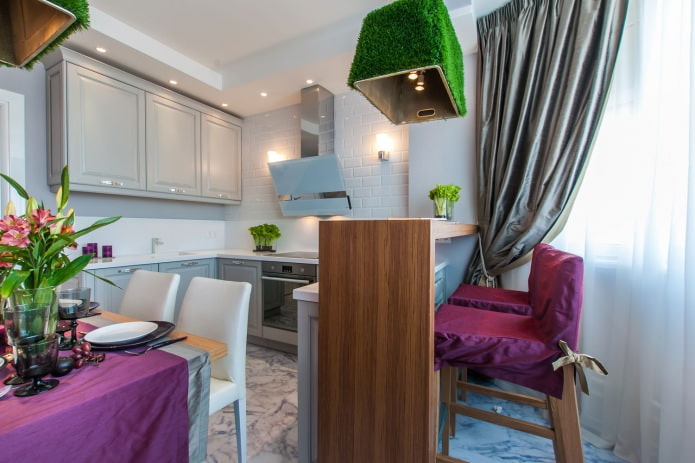
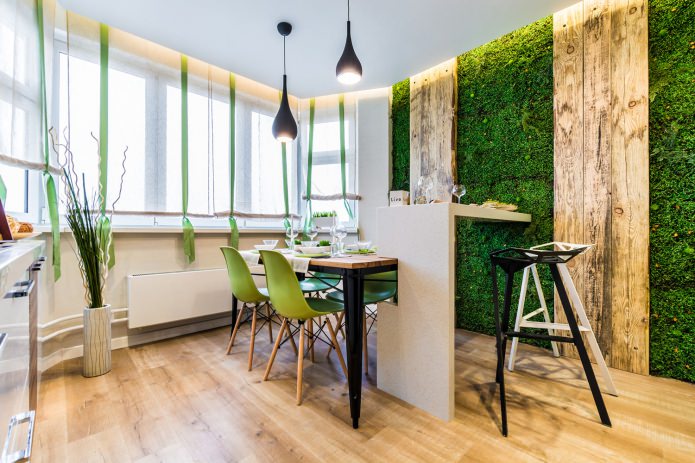
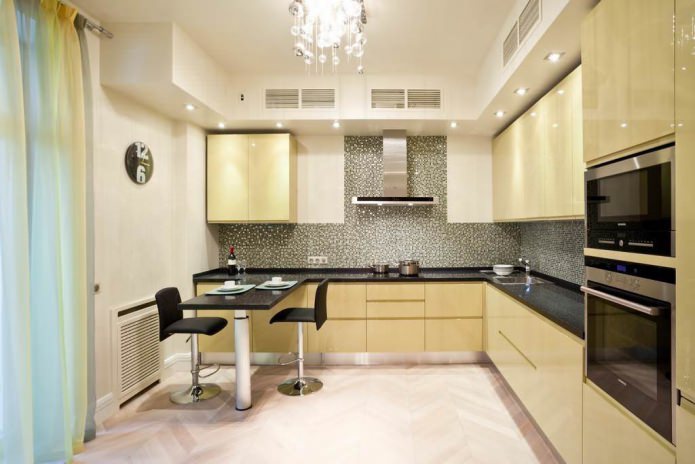
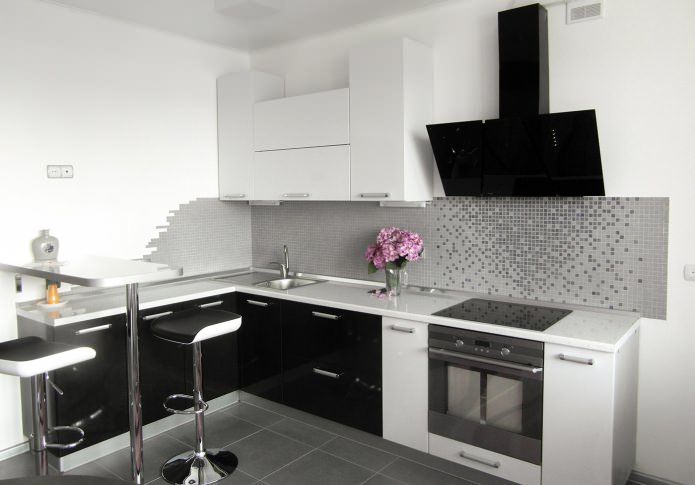

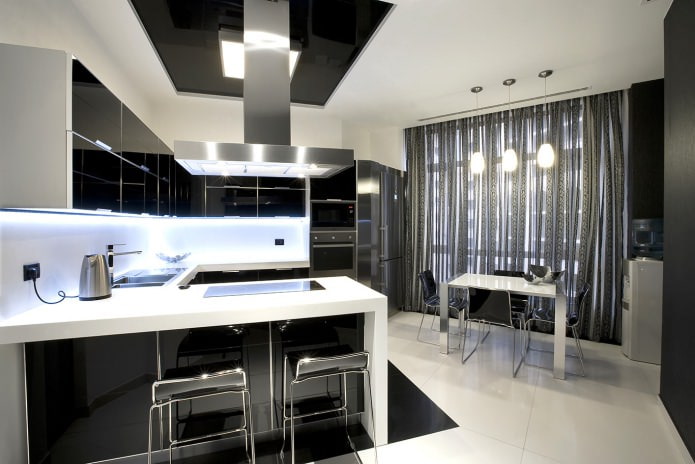
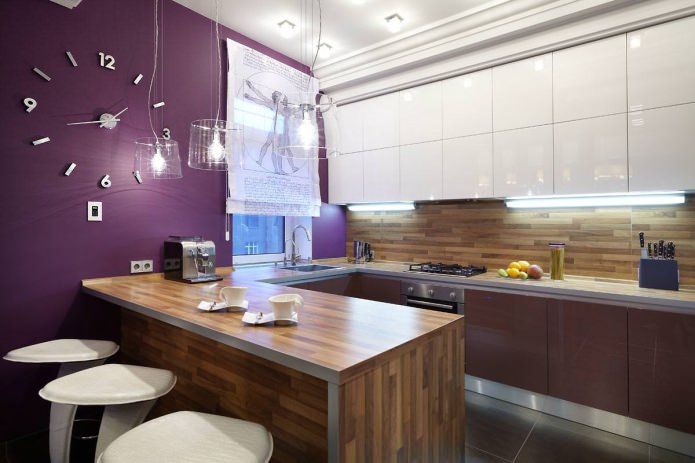
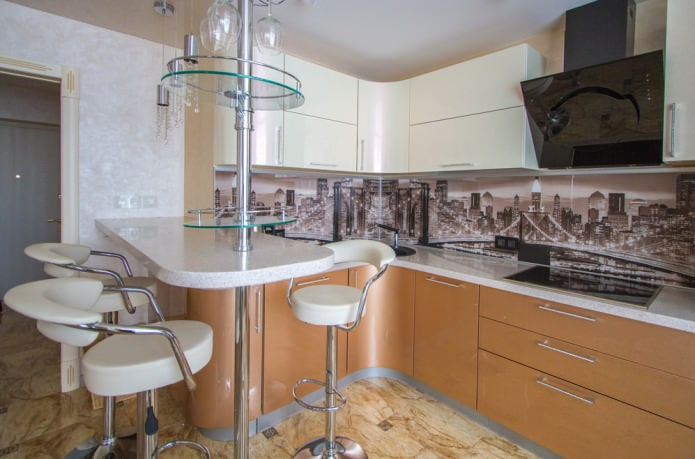
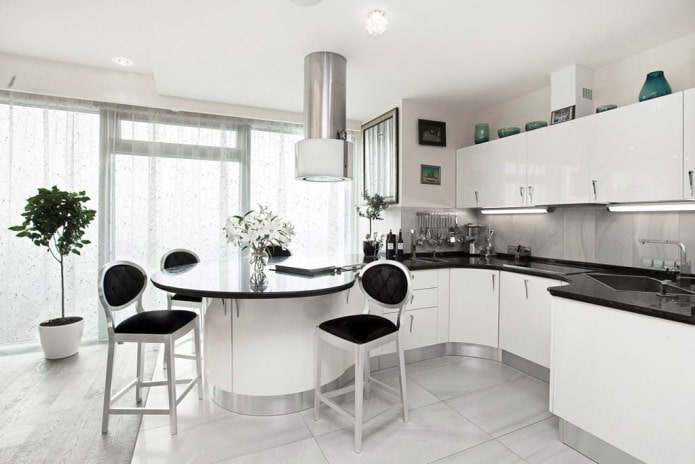

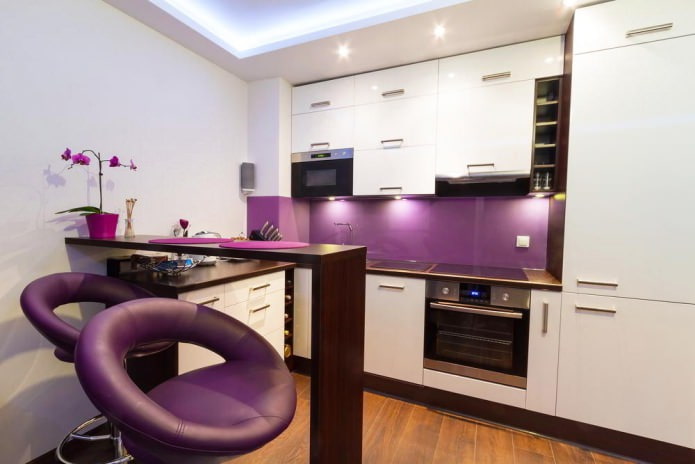
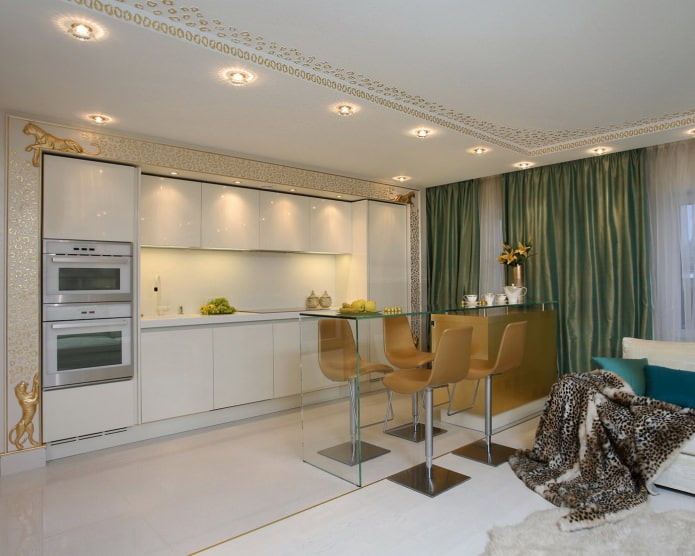
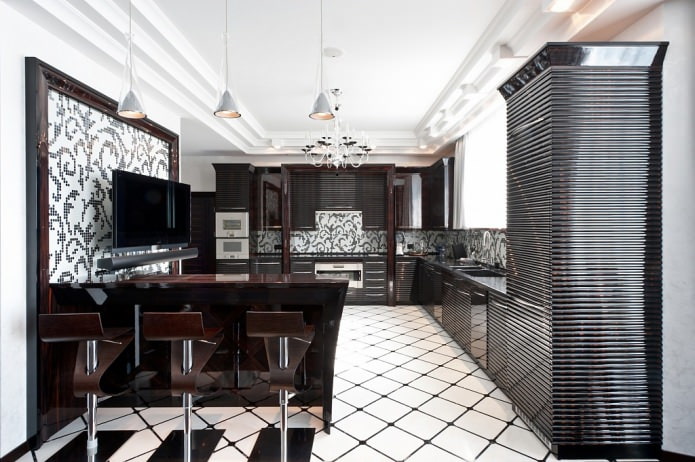
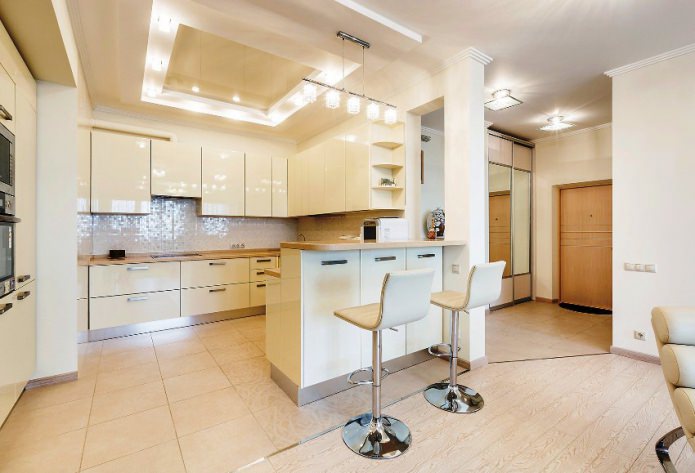
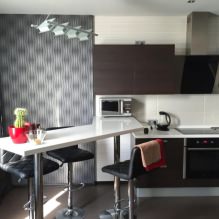
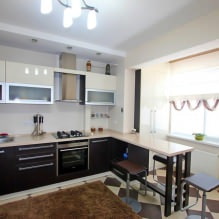

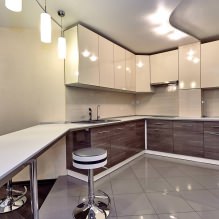
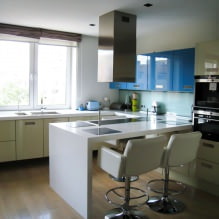

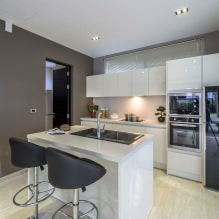
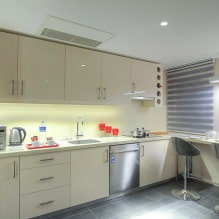
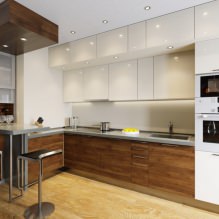
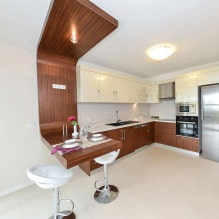
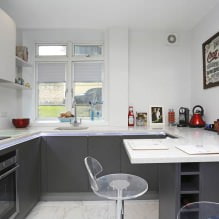
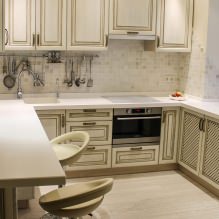
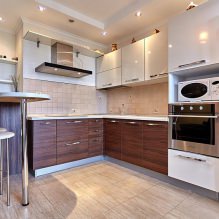
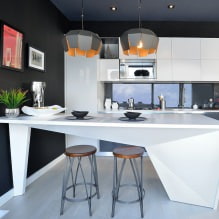
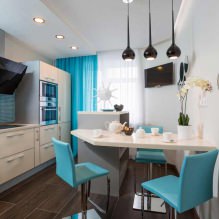
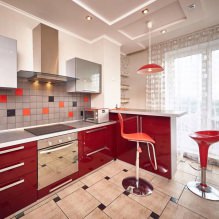


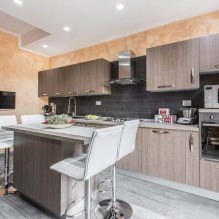
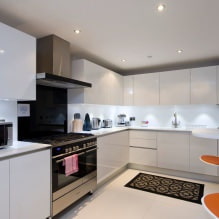
 How to choose the color of your kitchen sink?
How to choose the color of your kitchen sink? White kitchen set: features of choice, combination, 70 photos in the interior
White kitchen set: features of choice, combination, 70 photos in the interior Black set in the interior in the kitchen: design, choice of wallpaper, 90 photos
Black set in the interior in the kitchen: design, choice of wallpaper, 90 photos How to choose curtains for the kitchen and not regret it? - we understand all the nuances
How to choose curtains for the kitchen and not regret it? - we understand all the nuances Design of a white kitchen with a black countertop: 80 best ideas, photos in the interior
Design of a white kitchen with a black countertop: 80 best ideas, photos in the interior Kitchen design with green wallpaper: 55 modern photos in the interior
Kitchen design with green wallpaper: 55 modern photos in the interior